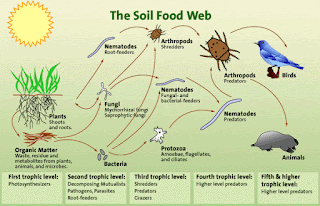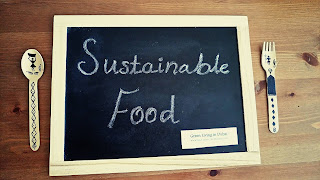Last month, on Earth Day 2016, I decided to spread the word of sustainability in two big industries Food and Fashion through the blog this year! Of course, these are integral parts of Living Sustainable and need a lot of awareness. Great thing is, people around the world are picking up interest in sustainability in these two industries and UAE is not lagging.
Do you know what exactly is sustainable food?
When we talk about sustainable food, people often end up summing it up under organic food. So first let’s see what makes food Organic.
To grow organic food, we need soil, water, and seeds that are natural and free from any chemicals or artificial additives or treatments. Basically Non-GMO (genetically modified) seeds, natural soil,

This makes an ideal Organic Farm which preserves natural resources and biodiversity.
Worldwide there are different certification bodies for organic farming and organic food. Not all of those bodies have stringent rules to follow all the above requirements. Rather some of the bodies even allow few chemicals. We need more homogeneous laws on organic farming worldwide.
Another issue is the availability of Non-GMO seeds. It is hampered as biotechnology companies like Monsanto modify seeds (add toxic gene) and patient the seeds. They are buying most seed companies across the globe to create dominance in the global seed market. They also own share and bought trademarks of companies that are popular for Non-GMO seeds. The biotechnological companies are altering seeds genetically which can reduce nutrition value and can also be linked to disabilities like Down’s syndrome. These companies don’t allow farmers to save seeds legally, which burdens farmers financially.
So finding open-pollinated, pure natural organic, Non-GMO seeds, is a difficult task and only those companies who have Non-GMO seeds are not linked to Monsanto and Seminis in any way can have authentic non-GMO seeds.
Worldwide there are ongoing campaigns against Monsanto, GMO seeds. Vandana Shiva from India’s Navdanya is a prominent name in this campaign. There are ongoing campaigns even for having proper Organic labeling in countries like the US. This shows how much money-making is made on the corporate level throughout the world under the name of healthy food, which is not entirely natural and cannot be healthier.

But only organic food does not make food sustainable. The production, process, distribution, consumption and waste disposal of all these steps of the food system should be sustainable to make Sustainable Food. The social, economic and environmental aspects of every step mentioned above have to be considered to call food ‘sustainable’. To understand the current state of environmental and social aspects of the food industry, read this article.
The welfare of farmers, fair wages and allowing them to save seeds are some of the important actions needed in the production of sustainable food. Because of seed monopoly by a few biotechnology companies, farmers are going in debt. Governments in developing countries don’t provide insurance for farmers, their water requirements are dependent on monsoon in countries like India, so if their crop is destroyed or if they don’t get enough output these farmers are committing suicides.
Across the globe soil and freshwater is getting contaminated not only by industrial waste but also the chemicals in pesticides and fertilizers coming from farms. This makes it even more difficult to grow sustainable food. Using hormones to produce more milk in cows, fishing of unsustainable fish or overfishing, genetically modified chicken & cattle for more protein these are other wrong examples of unsustainable food.
The chemical processes done on food to preserve it or to enhance the taste is affecting the nutrition values of our food. The increasing energy & water consumption during food processing increases the carbon footprint of the food product, making is unsustainable. Junk food popularity is a good example of how we are going further away from sustainable food.
To make distribution of food sustainable, fair trade and locally grown food are the key answers. Local farmer’s markets need to grow bigger worldwide.
While in the consumption step, we need to stop consuming all sorts of unsustainable food. Consumer choice affects the most on food production. Stop buying non-organic food (choose organic food after reading all labels), in shortstop buying those seedless fruits like grapes, watermelon etc and say no to unusually bigger size fruits and vegetables. Stop buying rare seafood and genetically modified meat. We need to increase the demand for sustainable food! Also, our food choices can heavily impact the environment. Animal products like meat and dairy place heavy burdens, as raising livestock requires a larger amount of feed, water, and energy.
Reducing the waste of food is one big important step in sustainable food. Half of our Earth’s population is going hungry, so we should not waste food.
On a personal level, we can follow these steps to reduce food wastage.
1. Stop overbuying of food
2. Cook food according to requirements.
3. Plan meals before shopping
4. Ask your guests to confirm their attendance before the party.
5. Donate food
6. Compost the waste food instead of throwing in the garbage. Read here some simple ways of creating compost and fertilizers out of kitchen waste.
Hotels & restaurants across the world need to tackle the issue of food waste. Offering different portion sizes, payment according to food weight at a buffet, promoting take away of leftover food these are few things restaurants can develop & follow. These businesses need to track their food waste regularly & update their action plans accordingly, this has to be a continuing process. Food donation to charities, NGOs, labors or unprivileged people is picking up in developing countries. Many organizations like Feeding India pick up leftover food from many big hotels on an everyday basis and providing it to unprivileged people on the streets. This is a great opportunity to tackle the hunger issue and food wastage at the same time. Read here a success story of reducing food waste in a hotel in Dubai by using innovative technology.
You can also reduce food waste at your home with this tried and tested idea; which is working well in our household.
 |
| Regrowing Lettuce at my home from scrap |
The best answer to sustainable food is to grow your own food. In your balcony, yard or small garden, use organic and food waste to create compost and use it instead of any fertilizer and make sure to buy non-GMO seeds or saplings. Use natural ways to keep pests away. That way you can have your own freshly picked food from your garden. Gardening is a great way to reduce stress in your day to day life. This is the best way to teach your kids about how food grows & what is sustainable food, right at your home. You can join local gardening groups and even swap plants, seeds and share knowledge. Read here some top tips for growing your own food.
The food which you can’t grow by your self, give preference to buying it locally.
 |
| Coriander from my window garden |
Choose wisely and live sustainably and don’t forget to join our tribe here to get more updates on living sustainable.

Amruta Kshemkalyani, an expert sustainability professional turned social entrepreneur, is the founder of the Sustainability Tribe, AK Sustainability
Read More >>
Copyright 2025 © Sustainability Tribe, Registered under 'Sustainability Tribe Marketing Management' in the U.A.E., Design by LBM INFOTECH
This was quite informative!
This was quite informative!